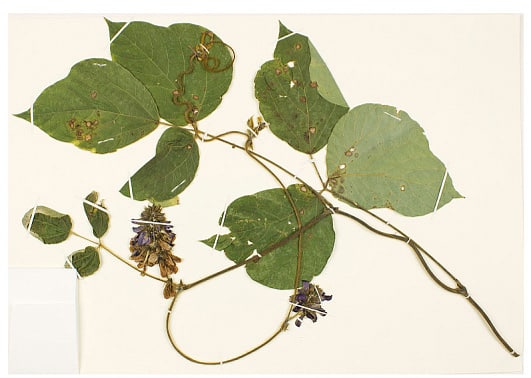Kudzu, a fast-growing legume-family plant and a popular food in Japan and China for thousands of years, was introduced to the United States in 1876. In China, kudzu root (genus: Pueraria, also called Japanese arrowroot) was used in traditional Chinese medicine for treating fevers, diarrhea, diabetes and heart disease. In America it was primarily used as pasturage and for erosion control. Not successfully. Most of the plant, leaves, vine tips, and purple flower blossoms are edible. It’s the tuberous roots (which have been known to weigh up to 450 pounds and reach 7 feet in length) that offer this plant’s real premium. The roots, dehydrated and pulverized, result in a starchy powder that is high in fiber, protein and vitamins A and D, rich in antioxidants (isoflavone puerarin), and is used in myriad ways from thickening soups and sauces to dredging foods for crispy deep-frying. Kudzu starch is a gluten-free with a velvety smooth texture similar to cornstarch, or potato starch, rice flour or arrowroot (all of which perform similar wonders). The root is also used as an herbal supplement or a root tea.
Introduced to America from Asia as a garden novelty at the 1876 World’s Fair Centennial Exhibition in Philadelphia, kudzu is an infamous “weed” in the American south. So invasive and persistent was the plant that Alice Walker, author of The Color Purple, made this potent metaphor, “racism is like that local creeping kudzu vine … if you don’t keep pulling up the roots it will grow back faster than you can destroy it.”
The government which was promoted, even subsidized the planting of kudzu during the dust-bowl days of the depression, in 1998 officially listed kudzu under the Federal Noxious Weed Act. Wildly invasive, quick growing kudzu reached mythical, apocalyptic proportions. Today the myth outlives the millions of acres once said to be invaded.

